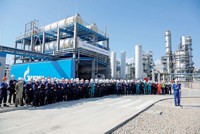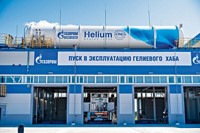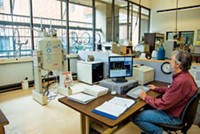Advertisement
Grab your lab coat. Let's get started
Welcome!
Welcome!
Create an account below to get 6 C&EN articles per month, receive newsletters and more - all free.
It seems this is your first time logging in online. Please enter the following information to continue.
As an ACS member you automatically get access to this site. All we need is few more details to create your reading experience.
Not you? Sign in with a different account.
Not you? Sign in with a different account.
ERROR 1
ERROR 1
ERROR 2
ERROR 2
ERROR 2
ERROR 2
ERROR 2
Password and Confirm password must match.
If you have an ACS member number, please enter it here so we can link this account to your membership. (optional)
ERROR 2
ACS values your privacy. By submitting your information, you are gaining access to C&EN and subscribing to our weekly newsletter. We use the information you provide to make your reading experience better, and we will never sell your data to third party members.
Business
Air Products Plans U.S. Helium Project
Supply Squeeze: New facility will help mitigate slowing U.S. production of helium
by Melody M. Bomgardner
October 31, 2013
| A version of this story appeared in
Volume 91, Issue 44

Balloon lovers, nuclear magnetic resonance instrument operators, and other helium users will face at least another year of high prices and low supplies of the gas. After that, things should start looking up, thanks in part to a new Air Products & Chemicals project in Doe Canyon, Colo.
The industrial gases firm will separate helium from naturally occurring underground carbon dioxide that is extracted by Kinder Morgan CO2 and piped to Texas for use in enhanced oil recovery. The project is the first new source of helium to be announced in three years, according to John Campbell of the gases consulting firm J.R. Campbell & Associates.
The announcement is timely; supplies of helium from the Federal Helium Reserve in Amarillo, Texas, are declining at an accelerating rate. The facility, responsible for about 30% of global helium supply, came close to shutting down entirely this year before Congress reauthorized the sale of helium in October. Falling helium recovery from natural gas reserves, along with production glitches and plant shutdowns, has added to the supply crunch.
The Doe Canyon plant is expected to produce up to 230 million cu ft per year, equivalent to more than 15% of the Federal Helium Reserve’s annual distribution. Air Products also has a joint venture with Matheson Tri-Gas to process helium in Wyoming, but it hasn’t stated when production will start.
Meanwhile, Air Liquide built a large plant in Qatar that has begun purifying helium from natural gas. It will eventually have an capacity of 2.1 billion cu ft. Still, global supply shortages are expected to continue through 2014.
Global demand for helium is rising, particularly in Asia for use in electronics production and magnetic resonance imaging equipment, while supply is not, Campbell points out. “The Air Products project won’t solve the shortage on its own but will reinforce Air Products’ premier position as a supplier with reliable production. It’s also a significant new investment at a time when price is going up due to scarcity.”





Join the conversation
Contact the reporter
Submit a Letter to the Editor for publication
Engage with us on Twitter